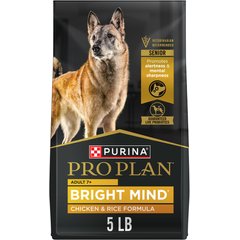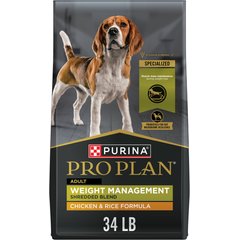How to Recognize Signs of Arthritis in Pets
Image via iStock.com/TatyanaGI
By Ashley Gallagher, DVM
Arthritis is one of the most common ailments affecting middle aged to senior dogs and cats. It can be a source of chronic pain and negatively affect their quality of life. Also known as degenerative joint disease, arthritis occurs when a joint is unstable causing the bones to move abnormally within the joint. Cartilage lines the joints acting as a barrier between bones. Over time this abnormal movement erodes the cartilage and bone begins rubbing against bone creating chronic inflammation and pain.
Recognizing Arthritis in Dogs and Cats
The most obvious sign of arthritis is a limping dog or cat. However, there are numerous other subtle signs that may indicate your pet is uncomfortable. Often what people notice is that their older pet seems to be “slowing down.” Perhaps your dog doesn’t charge up the stairs like he used to or takes a bit longer to recover after a long day of playing. If your dog used to follow you around the house and now he just stays in one place this could also be a sign of mobility issues.
Since cats aren’t usually as active as dogs, their signs of arthritis may be revealed differently. Cats with arthritis may start urinating or defecating out of the litter box because it is too painful for them to jump into it. You may also notice that your cat is grooming excessively in one area, which could indicate focal arthritis pain. These are just a few examples. Bottom line: if you notice any changes in your pet’s behavior, talk with your veterinarian immediately.
Vet Recommended Dog Food
- Eukanuba Premium Performance Puppy Pro Dry Dog Food, 4-lb bag$25.99Chewy Price
- Purina Pro Plan Bright Mind Adult 7+ Chicken & Rice Formula Dry Dog Food, 5-lb bag$24.68Chewy Price
- Purina Pro Plan Adult Weight Management Shredded Blend Chicken & Rice Formula Dry Dog Food, 34-lb bag$77.48Chewy Price
- Hill's Science Diet Adult Lamb Meal & Brown Rice Recipe Dry Dog Food, 33-lb bag$83.99Chewy Price
Is My Pet Prone to Arthritis?
Large and giant breed dogs like Labrador retrievers and German Shepherds can have a genetic predisposition to develop joint disease in their hips and elbows. Start your puppy off right by feeding a large breed puppy food specifically designed to make sure your pet receives the correct nutritional balance so his bones and joints develop at an appropriate rate. If growth occurs too quickly then the joints may form abnormally resulting in joint disease.
Ways to Prevent (and Treat) Arthritis in Dogs and Cats
Fortunately, there are many ways to prevent arthritis from developing as well as to treat it once it has set in. The absolute best way to prevent arthritis in dogs and cats is to keep your pet at a healthy weight. This will reduce the stress that the body places on joints and help keep things moving like they should. If you notice that your dog or cat has some “extra padding” around the ribs or belly then you should speak with your veterinarian immediately to see if your pet is overweight. They will also be able to help you with a weight loss plan.
Therapeutic diets, found at your favorite pet food retailer, are another great option for pets with mobility issues. These diets can be specifically formulated to address many health issues, including arthritis. For example, therapeutic pet foods with Omega 3 and 6 fatty acids balanced in a specific ratio can help your pet by reducing inflammation and target pain pathways. When used properly under the supervision of a veterinarian, therapeutic diets given to arthritic pets may have them running, walking, and jumping in as little as a few weeks. Your veterinarian may also recommend a therapeutic diet with glucosamine and chondroitin sulfate, two commonly used nutritional supplements which support joint health by maintaining the cartilage and repairing any defects that might be present.
You may be tempted to supplement your pet’s current diet with fatty acids, glucosamine or chondroitin on your own, but be aware that it is difficult to get the proper balance with the diet. It will also add in unwanted calories which is undesirable when you are trying to keep your pet slim. The great thing about therapeutic diets specially formulated for arthritis is they have a lower overall calorie count and the additional calories from adding in the fatty acids have already been factored in. Therefore you have a much lower risk of overloading your pet with calories, which can lead to weight gain.
If the above methods don’t do the trick, then it may be time to discuss starting pain medication with your veterinarian. Joint disease should be addressed on multiple fronts in order to make your pet as comfortable as possible. But as the saying goes prevention is always the best medicine. Keep your pet slim and if you do notice some stiffness, limping or slowing down in your dog or cat, talk to a veterinarian right away about therapeutic diets and other arthritic treatments available for your pet.
Image: PhotographyByMK / via Shutterstock
More to Explore
Do Dogs and Cats Suffer from Alzheimer's?
5 Senior Dog Diseases You Need to Know




